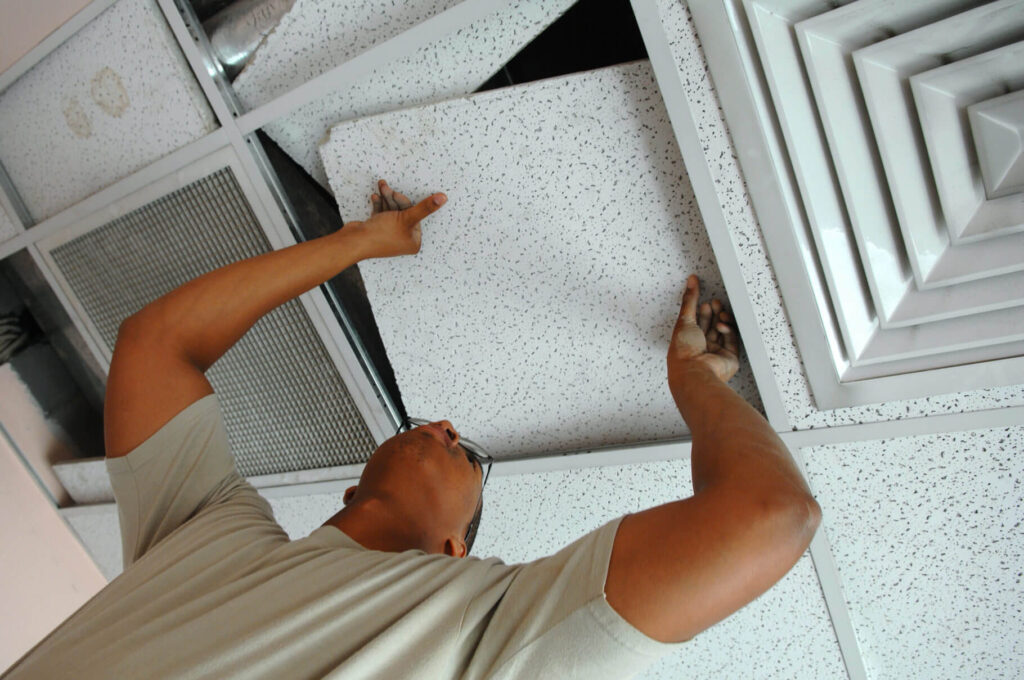Proper ventilation is crucial in a commercial kitchen for safety and comfort. Your HVAC system and adequate hood ventilation are critical to achieving this goal. Among the essential elements of this system is the duct access door. This article will explain why commercial kitchens require grease duct access doors, how they support the kitchen’s HVAC and hood ventilation, and how BA-AA Duct Access Doors can work for you.
Problems You Can Avoid by Installing Duct Access Doors
To understand the importance of duct access doors, let’s explore an example of a commercial kitchen without these essential components:
Imagine a bustling commercial kitchen that operates at a high capacity, serving various dishes throughout the day. However, in this kitchen, the duct access doors are missing. This absence creates several problems:
Issue #1: Inefficient Inspection and Maintenance:
Without access panels, technicians face significant challenges accessing the ductwork for inspection and maintenance. The lack of accessible entry points means inspections become time-consuming and labor-intensive, requiring technicians to dismantle parts of the duct system or find alternative, less efficient methods. As a result, the process becomes burdensome and disruptive to daily kitchen operations. The lack of regular maintenance leads to grease, dirt, and debris accumulating, obstructing airflow, and posing potential fire hazards.
Issue #2: Increased Fire Risk:
Grease fires are a constant concern in commercial kitchens. Cleaning and removing grease deposits from the ductwork becomes more difficult without access panels. Consequently, the risk of grease buildup and highly flammable conditions increases. The absence of access panels also hampers fire inspections, making it challenging for authorities to ensure compliance with fire safety regulations. This puts the kitchen staff and the establishment at a higher risk of fire incidents.
Issue #3: Poor Airflow and Ventilation:
Access panels are crucial in maintaining proper airflow and ventilation in a commercial kitchen. Without them, obstructions such as grease buildup, debris, or blockages can occur within the ductwork, hindering the smooth flow of air. Inadequate airflow leads to poor temperature control, discomfort for kitchen staff, and compromised indoor air quality. Unpleasant odors, excess heat, and the accumulation of smoke and contaminants become more likely without efficient ventilation, impacting both the kitchen environment and customers’ dining experience.
Issue #4: Operational Inefficiencies:
Without easy access to the ductwork, the time and effort required for inspections, cleanings, and repairs increase significantly. Lengthy and complicated maintenance procedures disrupt kitchen operations, leading to delays and potential revenue loss. Inefficient maintenance practices can also result in frequent breakdowns or malfunctions of the HVAC system, further impacting the smooth operation of the kitchen.

Why Do You Need Duct Access Doors?
Commercial kitchens need grease duct access doors for the following reasons:
Easy Access for Inspection and Maintenance:
Regular inspection and maintenance ensure the optimal performance of grease ducts. Access doors provide technicians with a convenient entry point for inspecting, cleaning, and repairing. Without access doors, accessing the ductwork becomes time-consuming and cumbersome, leading to operational delays and inefficiencies.
Compliance with Fire Safety Regulations:
Commercial kitchens are prone to grease fires due to the high volume of cooking activities. HVAC grease duct access doors are crucial for fire safety as they allow thorough cleaning of grease ducts, reducing the risk of grease buildup and potential fire hazards. Access doors also facilitate fire inspections, ensuring safety regulations and standards compliance.
How Do Duct Access Doors Support Your HVAC System?
Duct access doors support the HVAC and hood ventilation systems in the following ways:
Improved Airflow Efficiency:
Proper ventilation is essential to remove heat, odors, and contaminants from the kitchen. Access doors enable easy access to the ductwork, ensuring no obstructions or blockages hinder airflow. Unobstructed airflow improves the efficiency of the HVAC system, leading to better temperature control and reduced energy consumption.
Enhanced Indoor Air Quality:
Efficient hood ventilation and HVAC systems contribute to maintaining a clean and healthy kitchen environment. Access doors allow for regular cleaning and maintenance of the ductwork, preventing the accumulation of grease, dirt, and other pollutants. Regular cleaning of the ducts eliminates unpleasant odors and ensures high-quality air for the kitchen staff and customers.
Benefits of Installing HVAC Grease Duct Access Doors
To avoid problems, installing high-quality duct access doors, such as the BA-AA Duct Access Door, is essential. These access doors offer numerous benefits, including:
Benefit #1: Durability:
High-grade stainless-steel HVAC grease duct access doors ensure durability and longevity even in demanding commercial kitchen conditions.
Benefit #2: Easy Installation:
With user-friendly features, the installation process is quick and straightforward, minimizing disruptions to kitchen operations. BA-AA is considered the gold standard for restaurant kitchen applications.
Benefit #3: Fire Safety:
The BA-AA Duct Access Door exceeds NFPA 96 and UL specifications with a 2300-degree fire rating. Review the specifications for rating details.
Benefit #4: Customization:
Ask about customization of your HVAC grease duct access doors, including various sizes, materials, and finishes.
High-Quality Duct Access Doors are a Worthy Investment
In conclusion, duct access doors are vital in maintaining a safe and efficient environment in commercial kitchens. Improving accessibility, ensuring compliance with fire safety regulations, and supporting efficient airflow and ventilation, duct access doors contribute to the overall success of the kitchen. Invest in high-quality duct access doors to enhance your commercial kitchen’s performance, safety, and productivity. Be sure to ensure a well-ventilated, safe, and thriving environment for your kitchen staff and customers.






